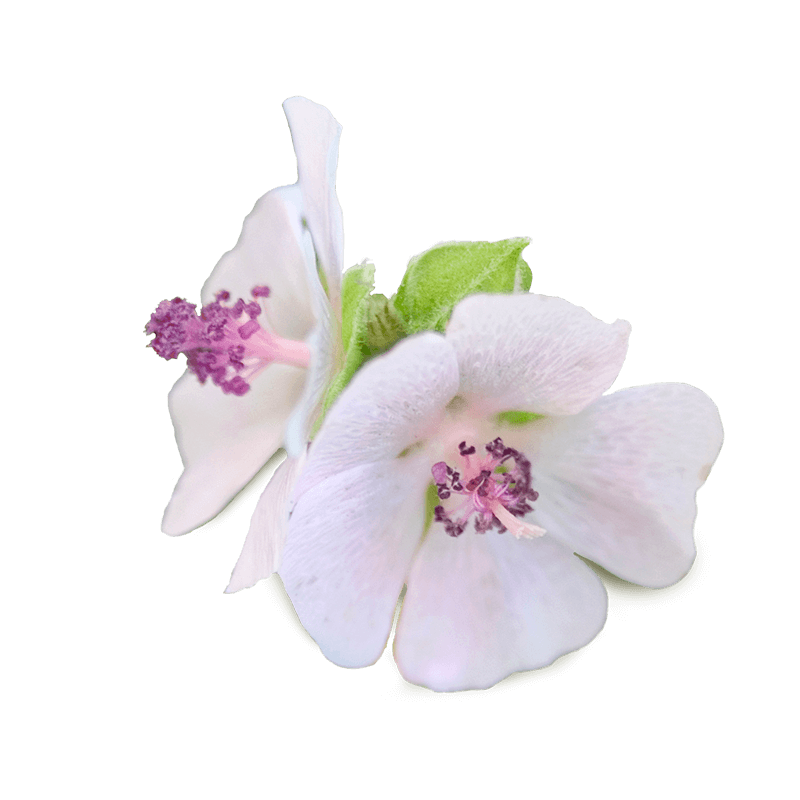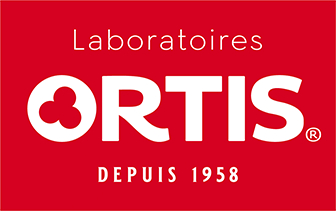
Marshmallow
Latin name
Origin
Used part
Active components
Polysaccharides (pectin, rhamnogalacturonan): help to halt the action of stomach acid and protect the stomach mucosa.
They also have a soothing effect on the throat.
Flavonoids: antioxidant action. Phenolic acids: antioxidant action.
Usage
Bibliographical references
- Aqueous extracts and polysaccharides from Marshmallow roots (Althea officinalis L.): cellular internalisation and stimulation of cell physiology of human epithelial cells in vitro.
Deters A, Zippel J, Hellenbrand N, Pappai D, Possemeyer C, Hensel A.
J Ethnopharmacol. 2010 Jan 8;127(1):62-9.
Pubmed: http://www.ncbi.nlm.nih.gov/pubmed/19799989 - Vibrational spectroscopy and electrophoresis as a "golden means" in monitoring of polysaccharides in medical plant and gels.
Spectrochim Acta A Mol Biomol Spectrosc. 2012 Jul;93:63-9.
Pubmed: http://www.ncbi.nlm.nih.gov/pubmed/22465769 - The detection of antibacterial actions of whole herb tinctures using luminescent Escherichia coli.
Watt K, Christofi N, Young R.
Phytother Res. 2007 Dec;21(12):1193-9.
Pubmed: http://www.ncbi.nlm.nih.gov/pubmed/17661335 - Antioxidant activity of medicinal plant polysaccharides.
Kardosová A, Machová E.
Fitoterapia. 2006 Jul;77(5):367-73. Epub 2006 May 24.
Pubmed: http://www.ncbi.nlm.nih.gov/pubmed/16797146 - Antibacterial activity of medicinal plant extracts against periodontopathic bacteria.
Iauk L, Lo Bue AM, Milazzo I, Rapisarda A, Blandino G.
Phytother Res. 2003 Jun;17(6):599-604.
Pubmed: http://www.ncbi.nlm.nih.gov/pubmed/12820224 - Gastroprotective effect and structure of a rhamnogalacturonan from Acmella oleracea.
Nascimento AM, de Souza LM, Baggio CH, Werner MF, Maria-Ferreira D, da Silva LM, Sassaki GL, Gorin PA, Iacomini M, Cipriani TR.
Phytochemistry. 2013 Jan;85:137-42.
Pubmed: http://www.ncbi.nlm.nih.gov/pubmed/23014505 - Anti-ulcerative effect of non-starch polysaccharides.
Krylova SG, Efimova LA, Zueva EP, Khotimchenko IuS, Razina TG, Amosova EN, Lopatina KA, Fomina TI.
Vestn Ross Akad Med Nauk. 2009;(11):35-9.
Pubmed: http://www.ncbi.nlm.nih.gov/pubmed/20017406 - Gastroprotective effect of natural non-starch polysaccharides.
Krylova SG, Khotimchenko YS, Zueva EP, Amosova EN, Razina TG, Efimova LA, Khotimchenko MY, Kovalyov VV.
Bull Exp Biol Med. 2006 Oct;142(4):454-7.
Pubmed: http://www.ncbi.nlm.nih.gov/pubmed/17415435 - Efficacy of a pectin-based anti-reflux agent on acid reflux and recurrence of symptoms and oesophagitis in gastro-oesophageal reflux disease.
Havelund T, Aalykke C, Rasmussen L.
Eur J Gastroenterol Hepatol. 1997 May;9(5):509-14.
Pubmed: http://www.ncbi.nlm.nih.gov/pubmed/9187886 - Chemistry and uses of pectin--a review.
Thakur BR, Singh RK, Handa AK.
Crit Rev Food Sci Nutr. 1997 Feb;37(1):47-73.
http://www.ncbi.nlm.nih.gov/pubmed/9067088
The health claims that feature on our website in relation to the plants contained in our products are compliant with the list of health claims awaiting final assessment by the Community authorities (cf. website of the European Commission: http://ec.europa.eu/nuhclaims/). However, they may be subject to modification following their assessment by the national competent authorities.
The health claims relating to other nutrients or substances contained in our products that feature on our site are compliant with Regulation No. 432/2012 of the Commission of 16 May 2012 which establishes a list of authorised health claims authorised in relation to food products, other than those in reference to the reduction of the risk of disease as well as community-based development and child health (cf. website of the European Commission: http://ec.europa.eu/nuhclaims/).

 Belgique
Belgique  België
België  France
France  Italia
Italia  Portugal
Portugal  España
España  United Kingdom
United Kingdom  Κύπρος
Κύπρος 